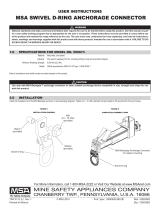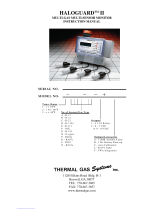MSA 9010/9020 LCD is a versatile and reliable monitoring system designed to provide continuous monitoring of various parameters, including gas concentrations, temperature, and relative humidity. With its user-friendly interface and advanced features, this device empowers users with real-time data and alarms to ensure safety and compliance in various applications.
MSA 9010/9020 LCD is a versatile and reliable monitoring system designed to provide continuous monitoring of various parameters, including gas concentrations, temperature, and relative humidity. With its user-friendly interface and advanced features, this device empowers users with real-time data and alarms to ensure safety and compliance in various applications.




















-
 1
1
-
 2
2
-
 3
3
-
 4
4
-
 5
5
-
 6
6
-
 7
7
-
 8
8
-
 9
9
-
 10
10
-
 11
11
-
 12
12
-
 13
13
-
 14
14
-
 15
15
-
 16
16
-
 17
17
-
 18
18
-
 19
19
-
 20
20
-
 21
21
-
 22
22
-
 23
23
-
 24
24
-
 25
25
-
 26
26
-
 27
27
-
 28
28
-
 29
29
-
 30
30
-
 31
31
-
 32
32
-
 33
33
-
 34
34
-
 35
35
-
 36
36
-
 37
37
-
 38
38
-
 39
39
-
 40
40
-
 41
41
-
 42
42
MSA 9010/9020 LCD Owner's manual
- Type
- Owner's manual
- This manual is also suitable for
MSA 9010/9020 LCD is a versatile and reliable monitoring system designed to provide continuous monitoring of various parameters, including gas concentrations, temperature, and relative humidity. With its user-friendly interface and advanced features, this device empowers users with real-time data and alarms to ensure safety and compliance in various applications.
Ask a question and I''ll find the answer in the document
Finding information in a document is now easier with AI
Related papers
-
MSA Ultima® XIR Gas Monitor Quick start guide
-
MSA 9010/9020 Controller Owner's manual
-
MSA Ultima® XL/XT Series Gas Monitors Owner's manual
-
MSA Ultima® XIR Gas Monitor Owner's manual
-
MSA Ultima® XL/XT Series Gas Monitors Quick start guide
-
MSA Ultima® Calibrator Owner's manual
-
MSA Ultima® XL/XT Series Gas Monitors Quick start guide
-
MSA Ultima® X Series Gas Monitors Owner's manual
-
MSA Ultima User manual
-
MSA TRIGARD® Gas Monitoring System Owner's manual
Other documents
-
CTI GG 6 User manual
-
 BeamGrip FP Stryder™ Beam Anchor Owner's manual
BeamGrip FP Stryder™ Beam Anchor Owner's manual
-
 Thermal Gas Systems HALOGUARD II User manual
Thermal Gas Systems HALOGUARD II User manual
-
NetSafety UNI-TROL Rack-Mount-Gas Controller Owner's manual
-
MB QUART PSC 316 User manual
-
Chord ULTIMA PRE User manual
-
Chord ULTIMA PRE User manual
-
Chord ULTIMA PRE 2 User manual
-
Chord ULTIMA PRE User manual
-
Chord ULTIMA PRE 2 User manual











































